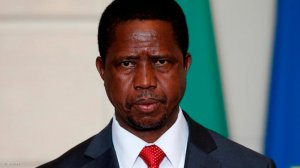Zambia has started reviewing its options to reverse the country's current energy constraints and diversify its own energy mix, leaving no viable potential initiatives off the table as it seeks to become a "power trader".
The mostly hydropowered Southern African country is currently battling severe energy shortages amid an El Nino-inflicted drought, with Zambian President Edgar Lungu looking to South Africa for assistance in relieving the constraints.
Lungu, who on Friday conducted a tour of South African power utility Eskom's developing Kusile power station, in Mpumalanga, is currently in the country to bolster Zambia–South Africa partnerships and to further implement the 21 agreements shared by the parties.
With further cooperation, Zambia believed it could become a strategic partner and enhance trading of power.
The country is considering all energy-generation sources, including coal-fired power generation and nuclear power generation, the president told a media delegation at the Kusile construction site.
The two countries were planning on accelerating their agreements, which encompassed several sectors, including infrastructure and energy.
Meanwhile, South Africa is also seeking increased collaboration with its neighbours for power trading and energy export.
State-owned Eskom is eyeing the export of any surplus energy. However, transmission restrictions are limiting the amount of energy that can be exported or traded with its Southern African counterparts.
As the parastatal continues its research into potential storage technologies and opportunities and develops its transmission interconnection capacity, it is currently exporting a surplus of up to 2 000 MW to Zimbabwe, which buys 1 000 MW, Zambia, which buys 580 MW and the remaining 420 MW being distributed to Botswana, Swaziland, Namibia and Mozambique.
Eskom is now proposing to collaborate with the Democratic Republic of Congo, Zambia, Zimbabwe and Botswana to explore new transmission interconnections and grid strengthening to provide mutual support between nations.
South Africa's 27 power stations currently provide 95% of the country's electricity requirements, with 85.1% of its nominal capacity of 42.8 GW sourced from coal-fired generation, 1.4% sources from hydropower, 5.7% sourced from gas, 3.4% sourced from pumped storage and 4.4% sourced from nuclear energy.
EMAIL THIS ARTICLE SAVE THIS ARTICLE
To subscribe email subscriptions@creamermedia.co.za or click here
To advertise email advertising@creamermedia.co.za or click here











